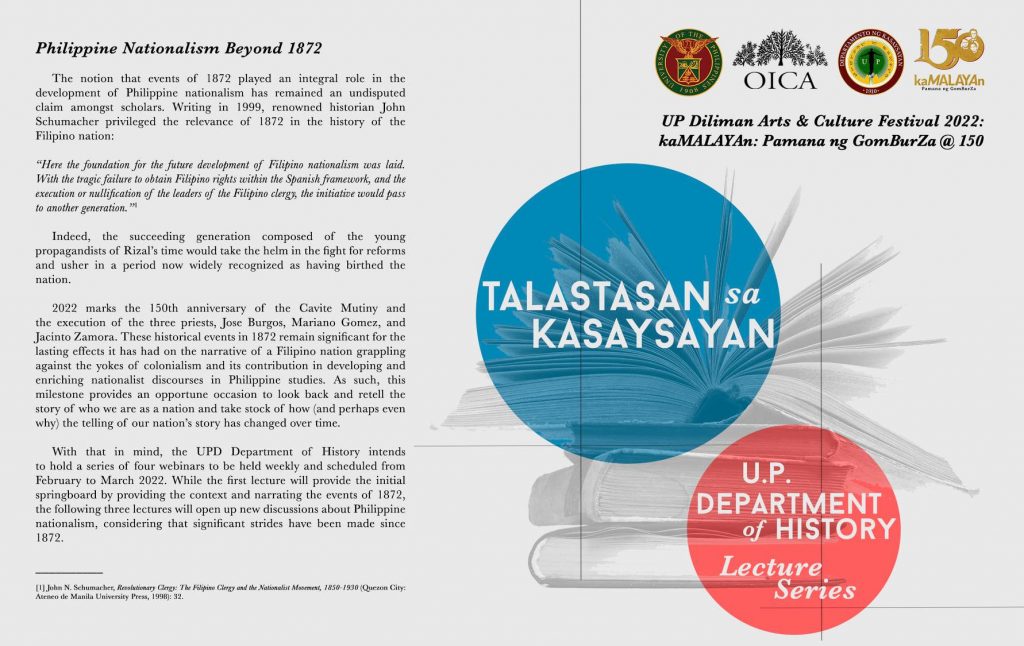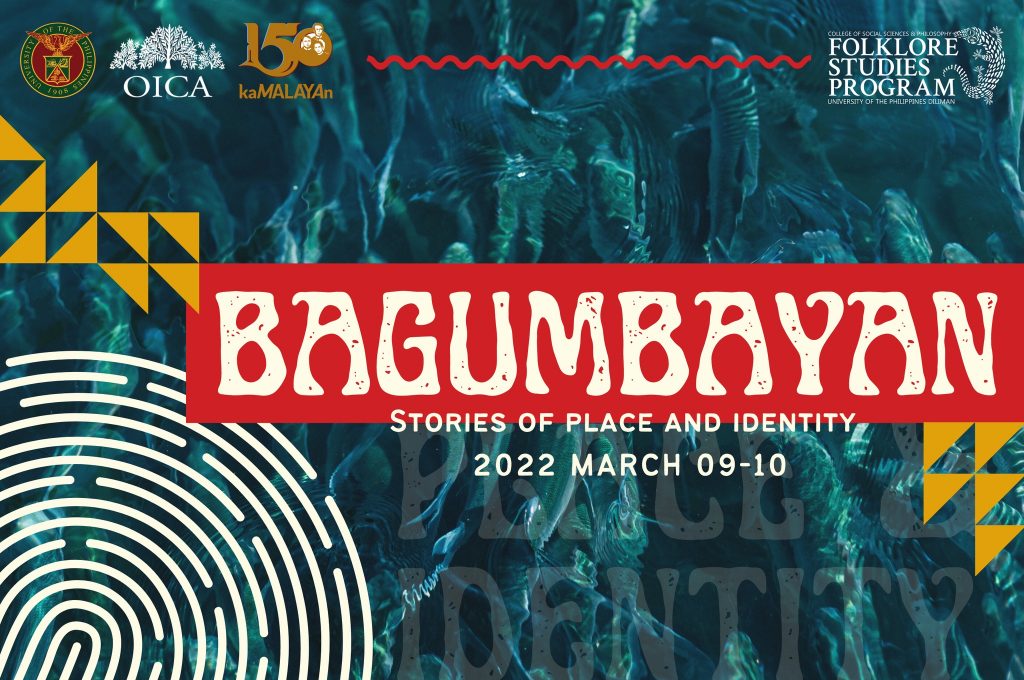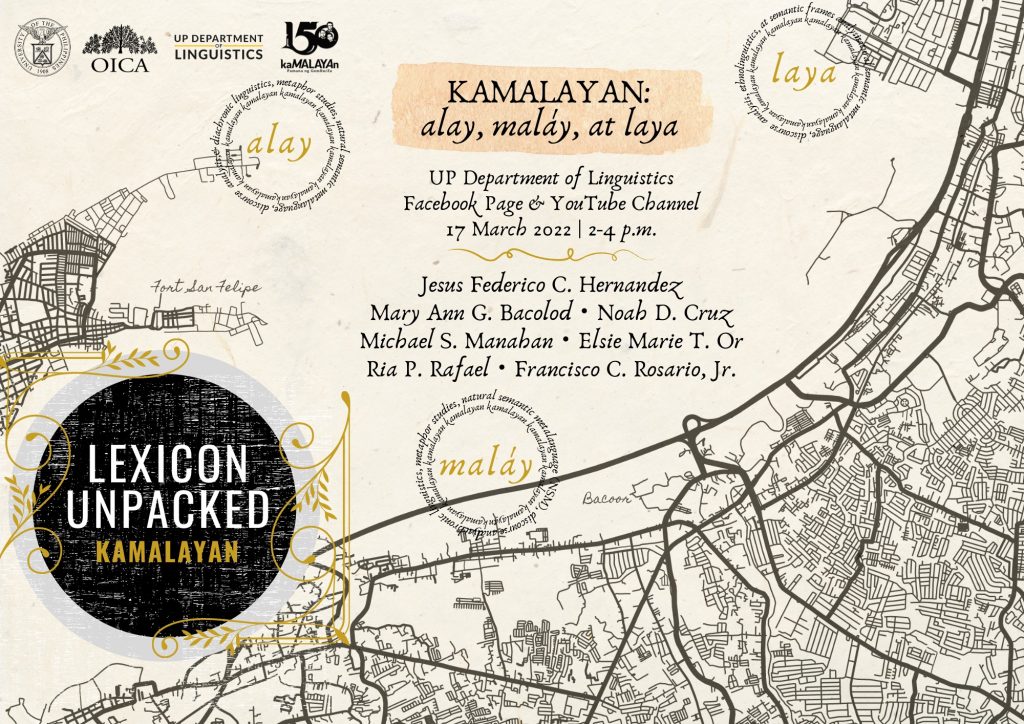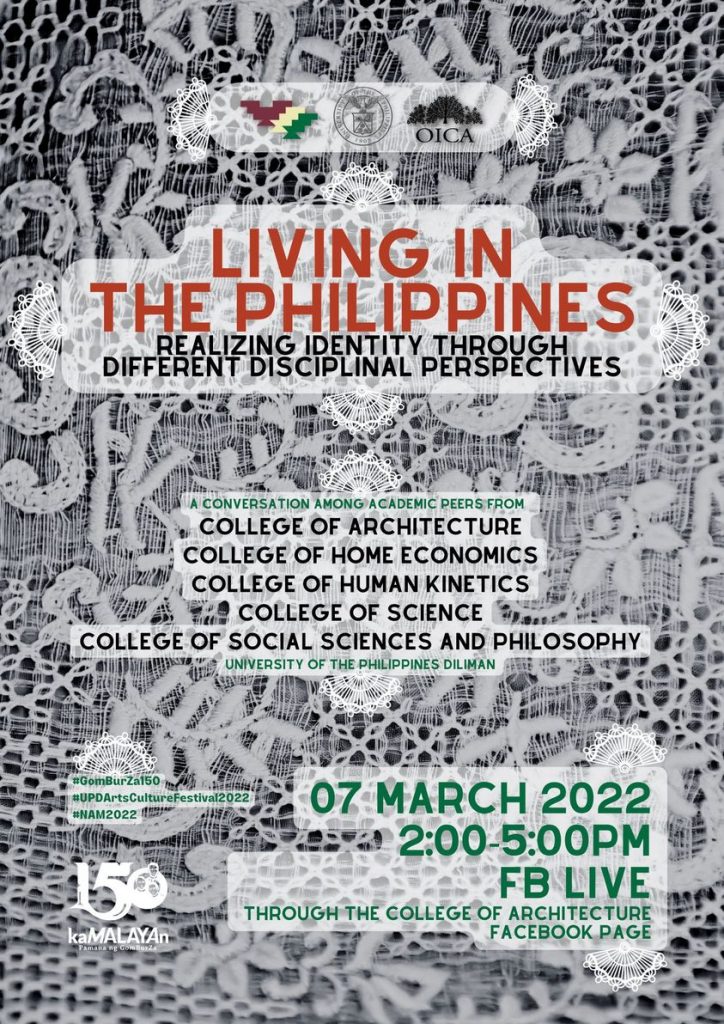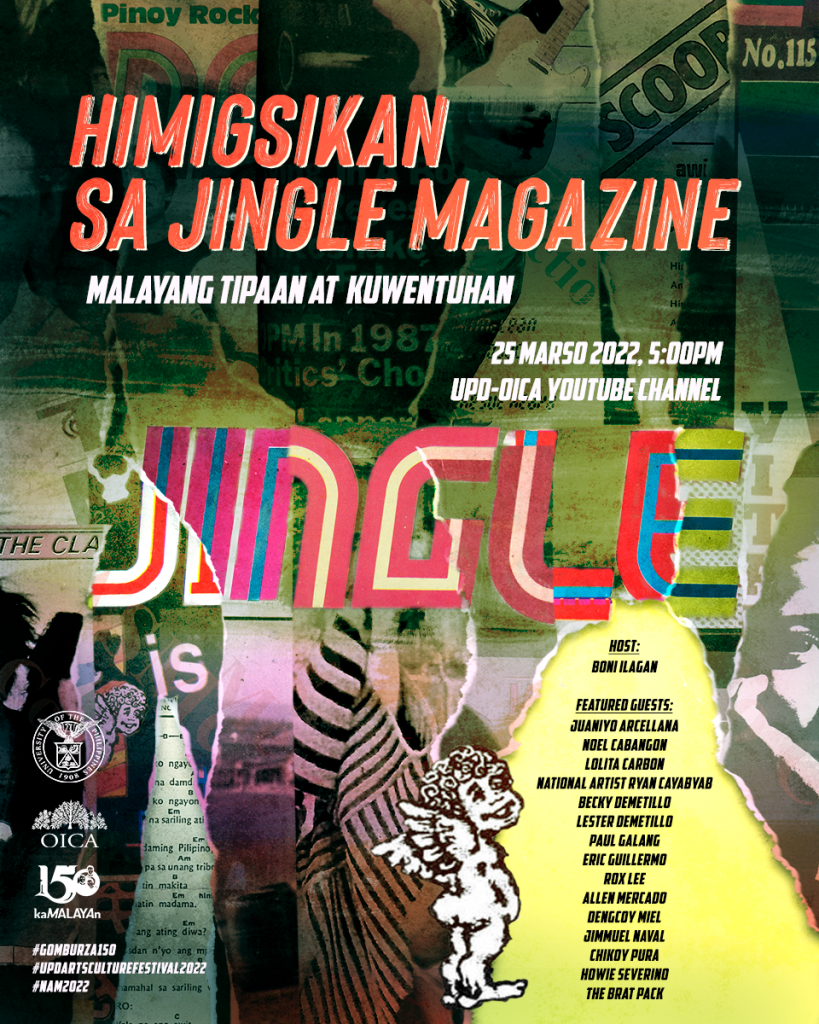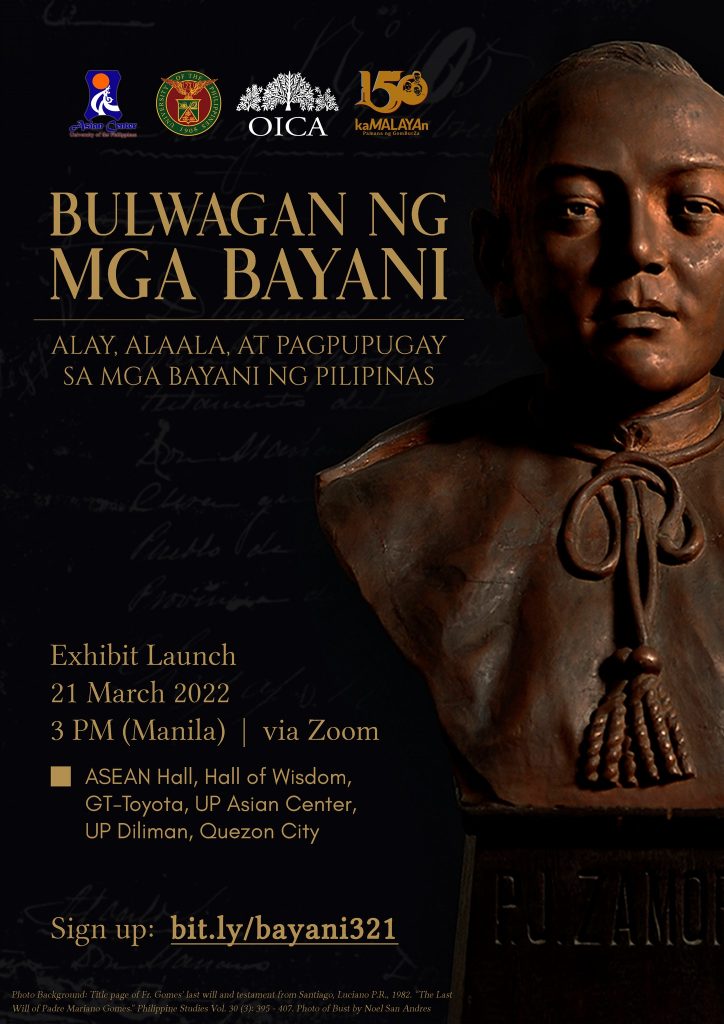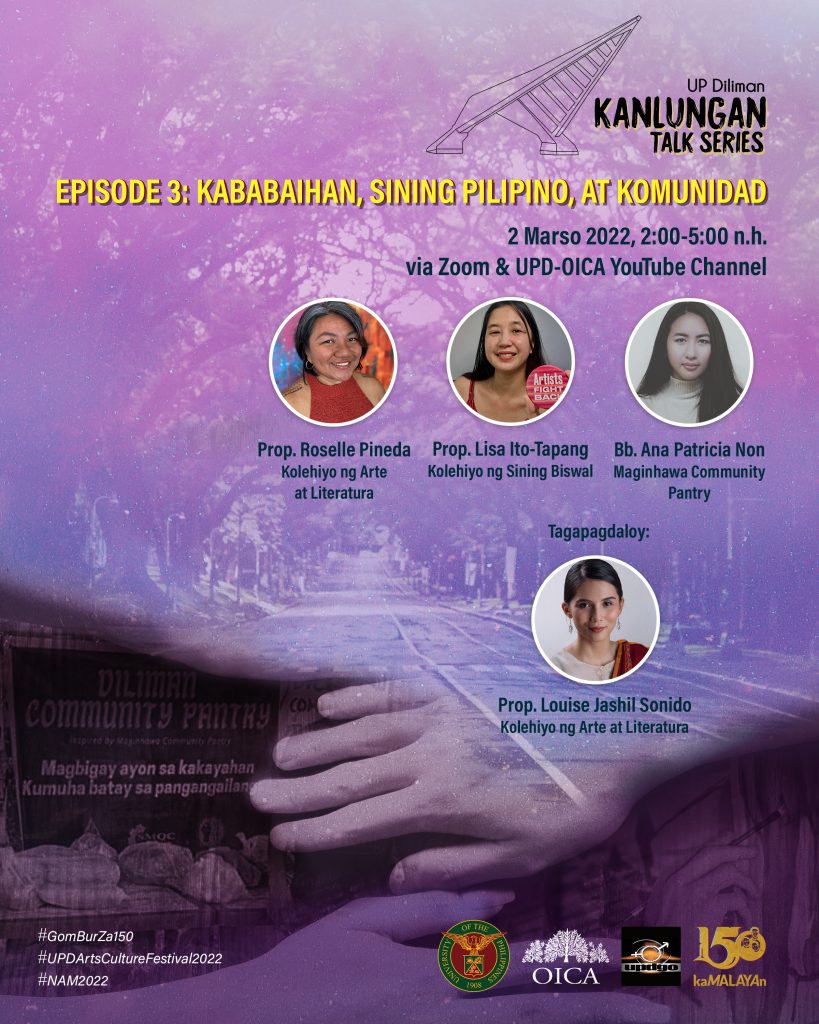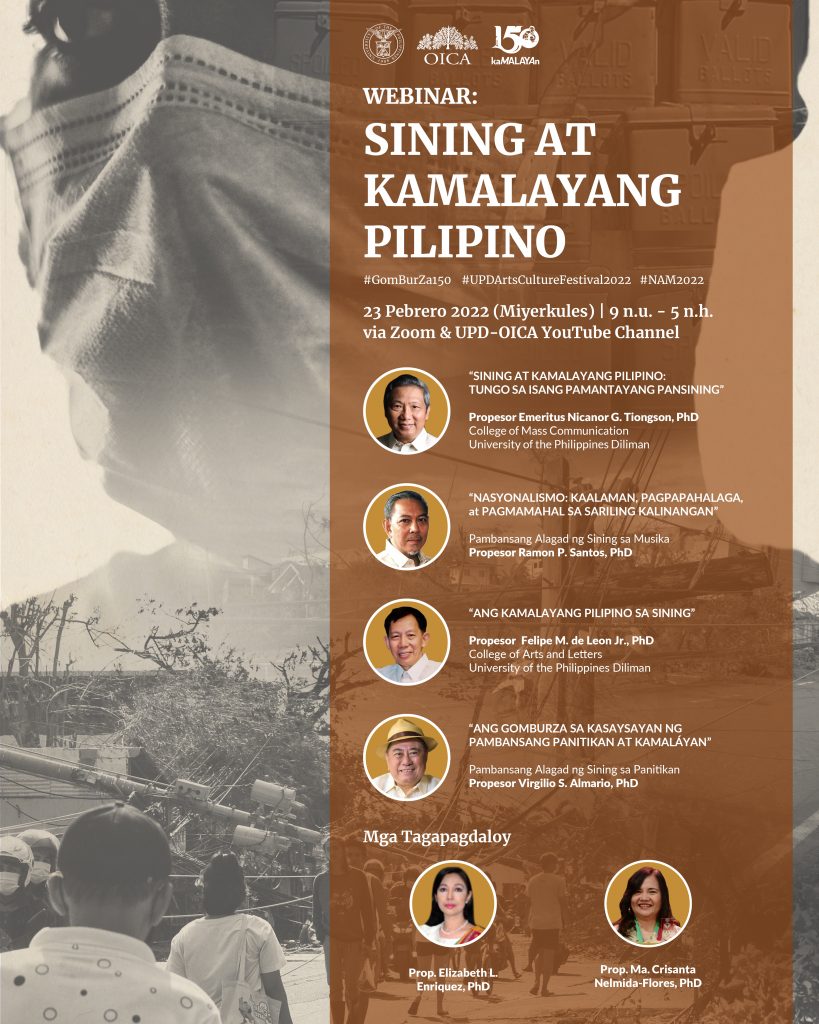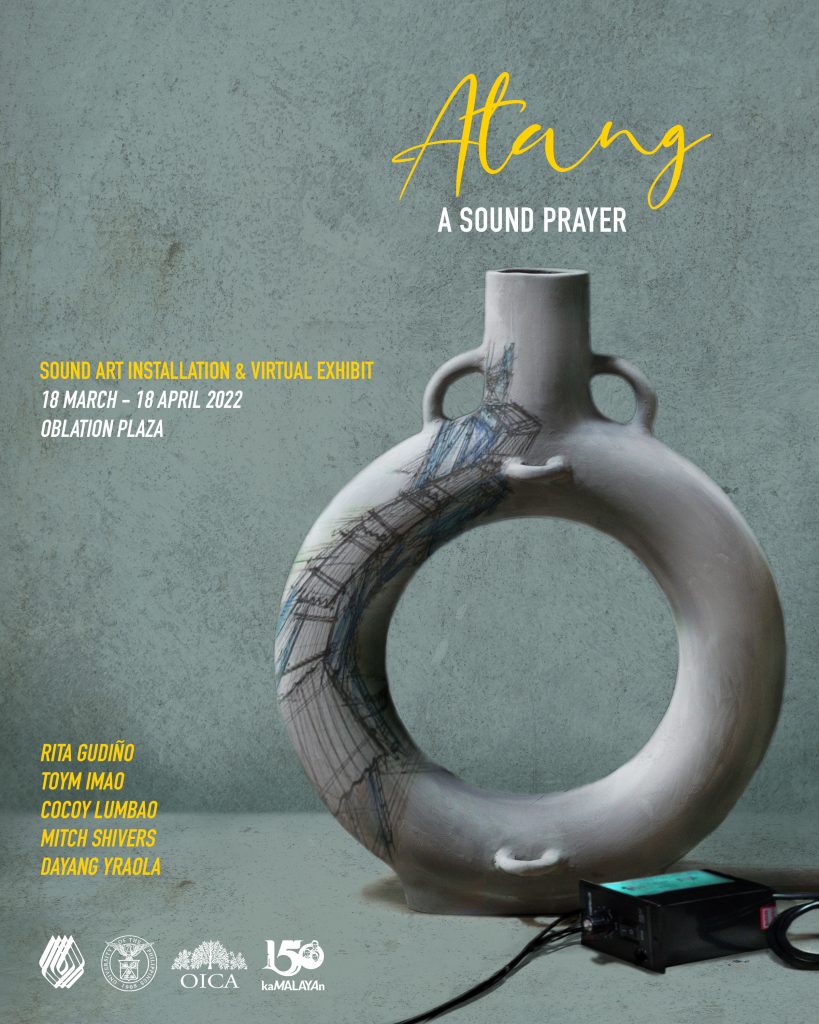UP Diliman Arts and Culture Festival 2022

Kaalinsabay ng pagdiriwang ng Pambansang Buwan ng mga Sining, ginunita ng Unibersidad ng Pilipinas Diliman ang ika-150 taong anibersaryo ng kamatayan nina Fr. Mariano Gomez, Fr. Jose Burgos, at Fr. Jacinto Zamora, mas kilala bilang GomBurZa, sa pamamagitan ng UP Diliman Arts and Culture Festival 2022 na pinamagatang “kaMALAYAn: Pamana ng GomBurZa @ 150.”
Ang mahalagang bahaging ito ng kasaysayang Pilipino na naganap noong 1872 ay maaaring ituring bilang isang historical turning point – isang pangyayaring nagsilbing mitsa ng kamalayang Pilipino at nasyonalismo – na hahantong sa Rebolusyong 1896. Para sa mga historyador, maaaring ituring ang danas at sinapit ng GomBurZa bilang ugat ng diwang makabayang nagsilbing artikulasyon ng kawalang-hustisya sa lipunang kolonyal. Hindi malayong nagsilbing punla rin ang diwang ito sa mga prinsipyo ng Kilusang Propaganda sa ika-19 dantaon, gayundin sa Katipunan na pinangunahan ni Andres Bonifacio.

Sa malawakang pagtingin sa kasaysayan, mula sa panahon ng pananakop ng mga Espanyol tungo sa mga kalupitan at kalabisan ng Batas Militar ng diktador na si Ferdinand Marcos noong 1972 hanggang sa kasalukuyan, masasabing patuloy at higit pang lumalakas ang alingawngaw ng mga hinaing ukol sa hustisya at pagkakapantay-pantay sa lipunan, ang pangangailangan ng marangal at makataong pamamahala, at mga katanungan ukol sa kondisyon ng Pilipino bilang tao at bilang mamamayan.
Nilalayon ng UP Diliman Arts and Culture Festival 2022 na pag-aralan at pagnilayan ang mga konsepto ng kamalayang Pilipino at ang mga nakapaloob na diwa ng ALAY, MALÁY, at LAYA sa salitang “kaMALAYAn.” Itinampok sa pagdiriwang ang mga proyektong pansining at pangkultura na umuugnay sa karanasang Pilipino sa konteksto ng pandemya, at mga isyung panlipunan na bumabalot sa ating bayan.
Ang UP Diliman Arts and Culture Festival 2022 Omnibus Program ay maaaring i-download sa:
IBA PANG MGA INISYATIBA
Ang mga sumusunod ay ilan pang mga inisyatiba ng mga organisasyon ng mga estudyante at ibang yunit sa UP Diliman na tumutugon sa tema ng 2022 UPD Buwan ng mga Sining at Kultura na “kaMALAYAn : Pamana ng GomBurZa @ 150.”











